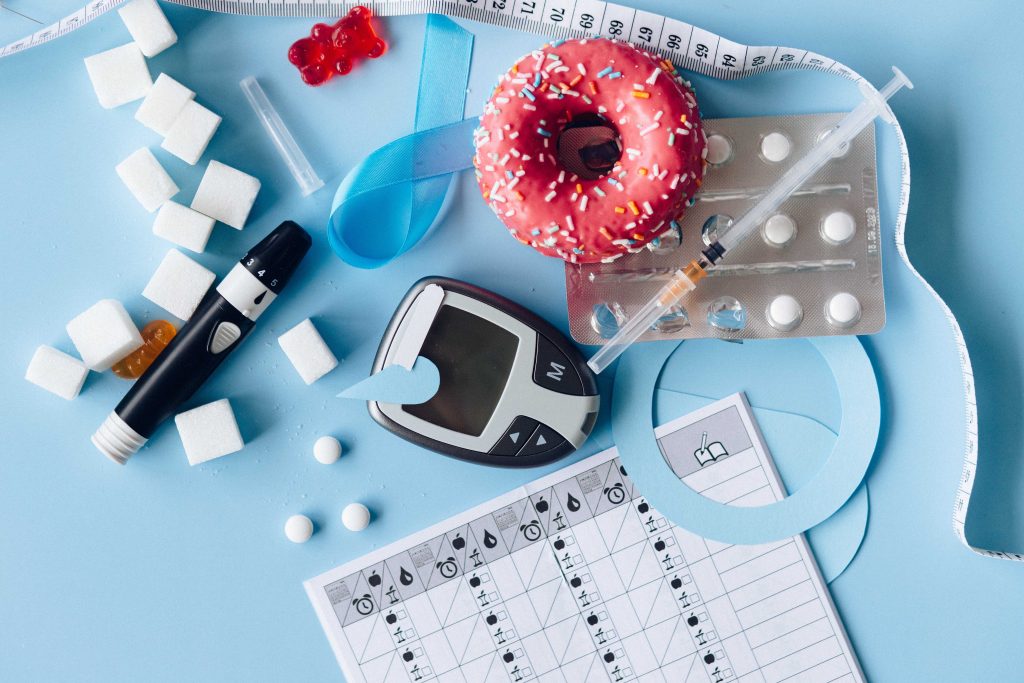Type 2 diabetes mellitus (T2DM) is a serious and highly prevalent metabolic disorder that impacts millions of lives and drives up healthcare costs worldwide. In the U.S. alone, the CDC’s 2020 National Diabetes Statistics Report documents that more than 34 million Americans — 10.5% of the entire U.S. population — have diabetes, with 90% to 95% of them living with type 2. Unfortunately, an estimated 7.3 million U.S. adults don’t even know it.
Fortunately, the ever-evolving multidisciplinary care team approach, including highly skilled clinical pharmacists playing a larger role, is having a significantly positive impact on diabetes detection and management…as studies and our own RxLive experiences are showing.
Costs escalating dramatically
In its study Economic Costs of Diabetes in the U.S. in 2017, the American Diabetes Association (ADA) showed that the U.S. portion of diabetes-related costs is $327 billion each year. This includes both direct medical costs and the cost of reduced productivity. Specific breakdowns show 30% expenditures on hospital care, 30% on prescription medications to treat complications of DM, 15% on anti-diabetic agents and supplies, and 13% on office visits.
Putting DM costs into further context, $1 in every $7 healthcare dollars is spent treating diabetes and its complications. This means that not only does DM impact people’s quality of life, but our collective pocketbooks as well.
The positive impact of pharmacist interventions
At the rate we’re going, it will be an extreme challenge to keep up with the medical and financial burdens and quality-of-life issues that Americans and people around the world are and will be facing. This problem requires ongoing immediate attention and education, and pharmacists are becoming increasingly involved and effective at helping to manage therapy for diabetic patients.
Pharmacists are in an ideal position to help diabetic patients. Pharmacists have been increasingly involved in diabetes care, beginning with medication counseling and diabetic education and leading up to collaborative work with physicians and other healthcare providers. The article “Pharmacists’ Role in Improving Diabetes Management” noted that in just the last 5 to 10 years, governing bodies have noticed their unique training, qualifications, positive impact and availability to help address this growing issue.
The problems of adherence, cost, optimizing medication, education, and improved outcomes are still a major issue and far from perfected. But it’s proven — and obvious — that the solution must continue to be driven by a multidisciplinary team of providers who work together and identify the most effective strategies that each discipline can bring to ensure optimal success.
Early studies showed impact of pharmacist involvement
The pivotal work began in the government setting. VAs, community health centers (CHCs) and other federal facilities published several early studies in diabetes outcomes with pharmacist-led interventions, showing a decrease in primary outcome of A1C reduction at 1.3% to 3.4%. Secondary metrics of lipid, blood pressure, cost, adherence and hospitalizations were measured, all showing significant reductions.
The Asheville Project — Launched in 1997 by the city of Asheville, NC to provide education and personal oversight for city employees with chronic health problems including diabetes, the Asheville Project was an influential community-based study that noted the specific role of the pharmacist in the outpatient setting. In a study published in the March/April 2003 issue of the Journal of the American Pharmaceutical Association (APHa), it was noted that patients were followed at one year and then for a 5-year follow-up. The primary endpoint of A1C reduction averaged 0.7%. At 5 years, the study still showed significant improvements in AIC, lipids, satisfaction and overall patient costs.
The project also evaluated care provided in outpatient clinic-based settings, where pharmacists worked with primary care doctors. Similarly, a reduction in the primary outcome of A1C by 1.7 to 3.4% was also shown. In that setting, the pharmacist role was primarily education and adjustment of medication.
Other community-based studies soon followed the Asheville model — education, counseling, medication review, home testing, the goals of glycemic control and medication therapy, and how to effectively ask and answer questions regarding diabetic needs.
Continued research and literature continue to show the value of the pharmacist. Refer to the RxLive Literature Review Summary (sheet 1) in Diabetes Studies for a detailed table of numerous relevant studies and sources. The table provides all patient population, endpoints and results with any associated p-values.
Summary of RxLive literature review & outcomes measured
The following is a review of clinical literature from the past 10 years to summarize the data supporting pharmacist-led interventions in diabetes management. A total of 5 META studies were evaluated and 12 clinical studies, 8 studies were randomized, controlled and 4 were randomized cluster/comparative studies.

Types of interventions used in methods — Pharmacist-led interventions can be categorized to further understand the most-effective ways pharmacists go about helping to make these changes. The list included overall diabetes education, medication education/use, lifestyle changes, patient care plan/goal settings, self-management skills support, and self-monitoring of blood glucose.
Review of clinical endpoints
A1C — Primary endpoints in all of these Diabetes Studies focused on A1C reduction from pharmacist interventions. The average reduction in all these studies combined for A1C values was 1.11% and all comparisons were statistically significant.
Lipid/BP — The most-common secondary endpoints were lipid control and blood pressure control. Most all studies evaluated these outcomes. Reporting across many of our reviewed literature showed consistent, statistically significant improvement in overall lipid control and blood pressure control in 67% and 75% of the studies respectively. Studies that didn’t reach significance all still showed positive trends in lipid and blood pressure management.
Other clinical endpoints that were analyzed in some, but not all, of the studies were glycemic control (patient reported hypo- or hyperglycemic events), body mass index improvements and 10-year cardiac risk scores. Analyzed data has shown statistically significant results in 3/3 studies for glycemic control and 2/2 studies for cardiac risk score. The BMI results showed 2/2 studies with non-significant, but positive trending results.
Review of patient-reported endpoints
Adherence — The most-common endpoint analyzed in the studies was adherence to medications. Six studies evaluated these results, with 5 of 6 showing clinically significant patient improvement after pharmacist-led education and interventions.
Satisfaction/quality of life — The next most-common endpoint was satisfaction and quality of life improvements. Five studies reported results, and 4 of 5 showed significant results.
Cost was the next most-common endpoint — Five studies evaluated overall costs to patients and/or healthcare organizations; again, 4 of 5 again showed significant results in savings.
Knowledge gained/self-management education was also reviewed in 3 studies. Each reported statistically significant improvements in knowledge and self-monitoring.
Admissions to hospital — The last endpoint to be reviewed was patients being admitted or readmitted to a hospital. Only two studies examined these results; one showed significant improvement while the other reported just a trend in positive outcomes.
The overwhelming results are very positive and clear: Pharmacists have continued to show a significant impact on diabetes management when working in all settings of community pharmacy practice, clinic based collaboration with physicians or other providers and even in the inpatient setting.
From our patient consults: RxLive Dashboard analysis
Now serving thousands of patients over two-plus years, RxLive has an increasing body of information itself, as well as the tools to track and analyze data from our pharmacists’ consults through our active RxLive Dashboard. The main metrics are number of overall intervention per med, number of times a medication changed, number of times a medication discontinued, number of times an adherence issue reported and number of times a cost concern reported.
Following is a table highlighting some of the main information captured to date as part of our contributing service to our patients and their physicians. The full analysis of all Diabetes meds is at RxLive Dashboard (sheet 2).

The RxLive Dashboard enables analytics of a recommended change to therapy. A subset analysis on change reasons will evaluate why the pharmacist recommended a change for the medication. Some examples are low-/high-dose alerts, suboptimal therapy, patient care recommendations, nonadherence, cost concern, better selection opportunity and patient complaint/symptoms, patient monitoring required or side effects.
Reasons for suggested changes to medication
The reasons our RxLive clinical pharmacists recommend a change are varied — from concerns over dosages to helping improve adherence by simplifying the medication regimen. You’ll see that safety and cost are also factors.
Reasons for change, by drug class
Sulfonylureas showed the highest percentages of changes. The main clinical reason for change is suboptimal therapy/low-dose alert. This may be because sulfonylureas lose their efficacy over time, causing patients to be unable to reach their A1C goal or that the patient’s dosage may have to be lowered due to hypoglycemia.
Dose optimization is very important for metformin (Subclass Review, sheet 3), as it’s the initial drug of choice due to fewer side effects, lower cost and positive A1C reduction. 68% of our patients to date are taking 500mg, while 24% are taking 1000mg.
Ongoing enhancements
RxLive reviews adherence and cost, noting which drugs and which strengths are being used. Thus, the patient-reported outcomes appear more accessible for addressing trends. Continuing forward, our goal is to also track some clinical endpoints, such as A1C, lipids, DM medication initiation and titration, including statins, ASA and types of BP medications used.
A bridge to continuity of care, optimal outcomes
This blog’s review of literature and our own analysis of RxLive patient interactions to date validates that pharmacists can and should play a pivotal role on the multidisciplinary care team for diabetes management. They bring deep, specialized knowledge and are best prepared to deliver pharmaceutical care programs, working closely with other care team members and the patient in designing, implementing and monitoring therapeutic plans to achieve specific outcomes that will improve patient quality of life.
Pharmacists do well in this role because they can serve as a bridge between visits to their physicians and other providers to help ensure the continuity of care that’s essential in diabetes management. Due to the complex nature of diabetes, and as recommended by the ADA, a collaborative approach in which the patient must play an active role — along with their multidisciplinary care team — will help promote success.
Please contact us anytime if we can answer questions about this blog or discuss how we can help you and your office-based care team deliver exceptional care to your patients who have — or may have — diabetes or prediabetes. Connect with us through the Contact Us page of our website, or call (866) 234-4974.




